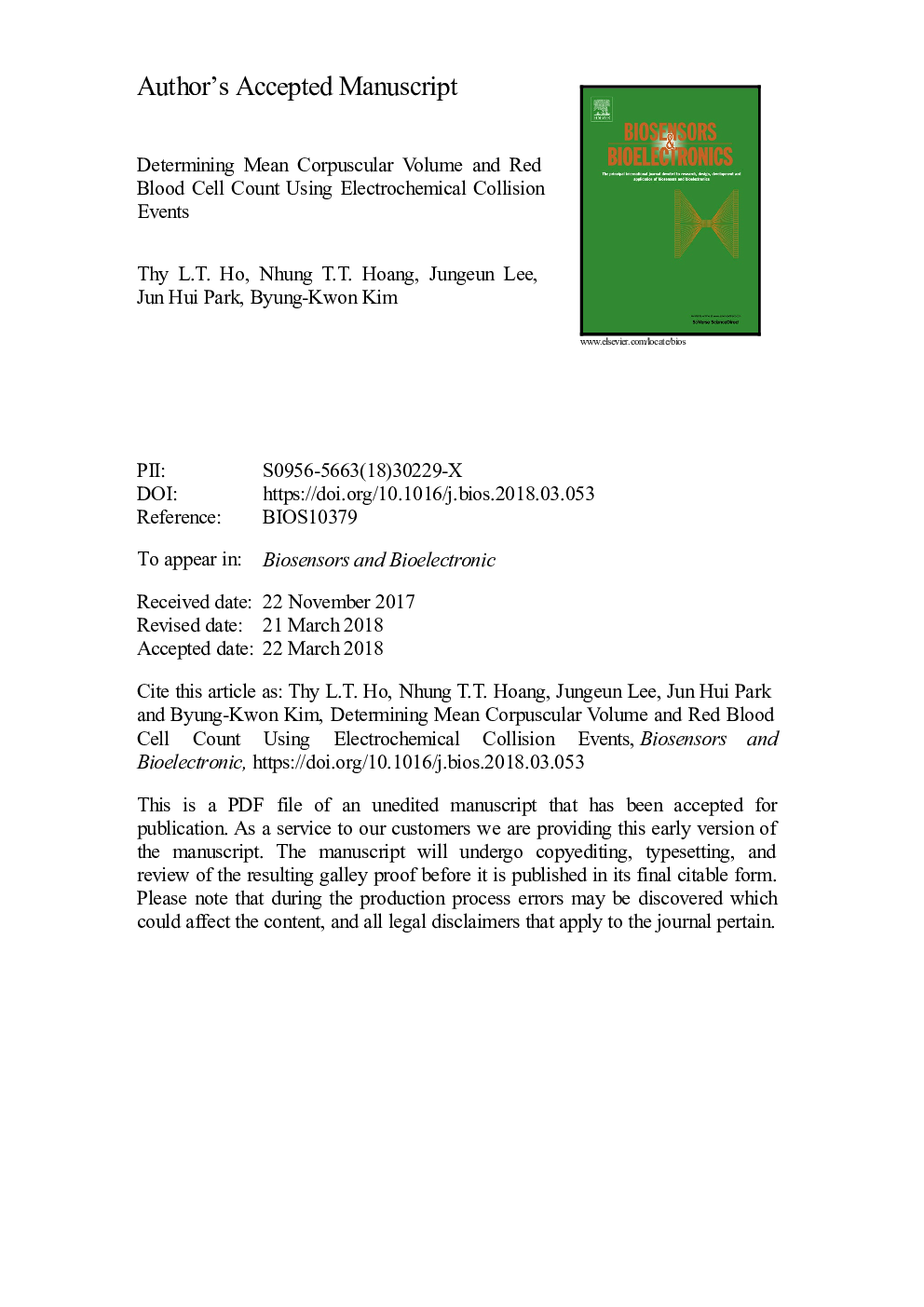| Article ID | Journal | Published Year | Pages | File Type |
|---|---|---|---|---|
| 7229432 | Biosensors and Bioelectronics | 2018 | 11 Pages |
Abstract
Blood tests (e.g., red blood cell (RBC) count) are crucial for detecting, diagnosing, and monitoring the progression of blood disorders. Here, we report the development of a new and rapid method for electrochemically detecting RBCs using single-particle collision events. The principle of this method relies on the electrochemical oxidation of an electroactive redox species (potassium ferrocyanide) hindered by an RBC attached to an electrode surface. A decrease in staircase current, caused by the collision of RBCs on the electrode, was observed. The magnitude of this current decrease could provide quantitative information on the size and concentration of RBCs, which could be converted into the mean corpuscular volume (MCV) and used for diagnosis. Anemia-related diseases caused by abnormal count of RBCs (e.g., erythrocytosis, pernicious anemia) or abnormal RBC size (e.g. megaloblastic anemia, microcytic anemia) could be detected easily and quickly using this electrochemical collision method, potentially leading to extensive applications in hematology and point-of-care blood testing devices.
Keywords
Related Topics
Physical Sciences and Engineering
Chemistry
Analytical Chemistry
Authors
Thy L.T. Ho, Nhung T.T. Hoang, Jungeun Lee, Jun Hui Park, Byung-Kwon Kim,
